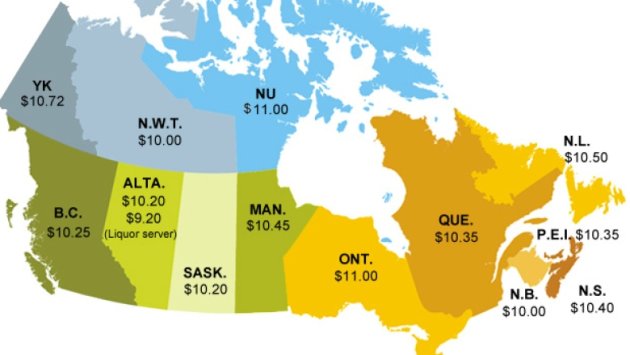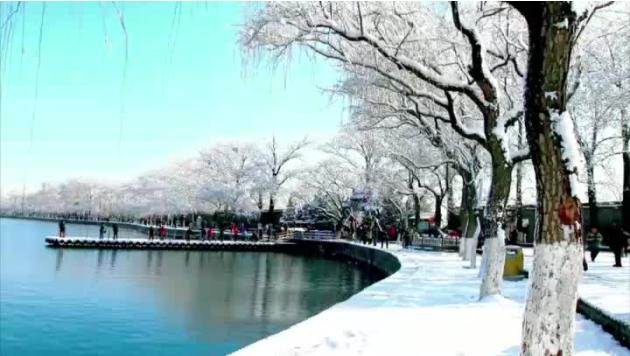As Islamic State fighters begin to blend in, defeating them no easy matter
By
Isabel Coles and Peter Apps BAQIRTA Iraq/WASHINGTON (Reuters) - After
their lightning takeover in June, flag-waving Islamic State militants
paraded through the captured Iraqi city of Mosul in looted U.S.-built
Humvees, armored cars and pickup trucks mounted with heavy machine guns.
Today, many…
1 - 6 of 12
By Isabel Coles and Peter Apps
BAQIRTA Iraq/WASHINGTON (Reuters) - After their lightning takeover
in June, flag-waving Islamic State militants paraded through the
captured Iraqi city of Mosul in looted U.S.-built Humvees, armored cars
and pickup trucks mounted with heavy machine guns.Today, many have ditched military-type vehicles that could make them easy targets of U.S. air strikes, and try to blend in with residents, say witnesses. While still terrifying, they are now a far more discreet force.
A Reuters examination of three weeks of U.S. air strikes reveals significant changes in the way the Islamic State operates since the U.S. joined the struggle against them, with fewer militants on the streets of Mosul the clearest sign. It is unclear how the Islamic State’s tactics will further change as a result of the reclaiming of the strategic Mosul Dam by Iraqi government and Kurdish forces or Sunday’s dramatic retaking of Amerli, where thousands had been cut off from food and water, but clearly battlefield strategies are involving on both sides.
The way the Islamic State is adapting shows the scale of problems ahead for President Barack Obama, the Pentagon and U.S.-backed Iraqi and Kurdish forces, as they struggle to reclaim ground from the Sunni militants, who have seized a third of both Iraq and Syria, and want to establish a jihadist hub in the heart of the Arab world.
After forging working arrangements with other armed Sunni groups and tribes angry at the Shi'ite Islamist-dominated central government in Baghdad, the Islamic State is now the most powerful force in parts of northern and western Iraq, with its ranks ranging from 8,000 to 20,000 fighters, according to Iraqi government estimates.
Large areas are under control of the radical offshoot of al Qaeda, and will be difficult to wrest away from them if Iraq's Shi'ite political leaders fail to appease disgruntled Sunnis, many of whom have embraced Islamic State after what they describe as years of discrimination and persecution.
Ousting the jihadists altogether will likely require a two-pronged approach, including ground combat in Iraq carried out by Iraqi security forces, Sunni tribesmen and ethnic Kurdish peshmerga fighters, perhaps with guidance by U.S. Special Operations Forces and American advisers, say Iraqi security officials and experts.
Defeating them would almost certainly require air strikes on Islamic State strongholds in neighboring Syria that could be risky, including the possibility of high civilian casualties given patchy American intelligence on the ground.
"To retake areas requires more than airstrikes. It requires specially trained fighters and the support of the population in these areas," said Ali Al-Haidari, an Iraqi security expert and former officer in the Iraqi military.
Washington needs to decide whether it wants to halt and contain Islamic State or wipe it out entirely, said Hayat Alvi, professor of Middle East studies at the U.S. Naval War College in Newport, Rhode Island."If they really want to destroy the Islamic State and stop them being a threat, they are going to have to get a lot more committed," she said.
RUSSIAN-BUILT JETS
Since Aug. 8, U.S. warplanes have mounted several strikes a day in Iraq, mostly around three key northern Iraqi battlefields: the Kurdish capital Arbil, Mosul Dam and Mount Sinjar, a strip of ground more than 40 miles (65 km) long where Iraq's ethnic Yazidis had been trapped by the jihadists.
U.S. F/A-18 jets from the carrier USS George H.W. Bush launched the first strikes around Sinjar in what it said was a move to protect Yazidis it feared were facing "genocide". U.S. officials say those planes have now been joined by land-based aircraft and drones from other bases in the region.
"So far, the air strikes have been focused on stopping IS moving forward," says Douglas Ollivant, former lead U.S. National Security Council official on Iraq for both President George W. Bush and Obama. "They've been quite successful, at least within Iraq. Syria is a different matter. So is pushing IS back in Iraq itself."
The increased use of airpower, not just U.S. fighter jets but also the arrival of Russian-built Su-25 attack jets for the Iraqi Air Force, have had a significant impact, say Iraqi and Western officials, though gauging casualties among Islamic State fighters is difficult.
THORNY DYNAMICS
In Mosul, a mainly Sunni city under Islamic State control, the group no longer flaunts its presence. "Their deployment is less than before," said one resident who declined to be identified by name for fear of Islamic State reprisals. "They avoid using machine guns on pickups as they are clear targets for the jets."
U.S. airstrikes also helped Iraqi forces and militia wage a coordinated assault on Islamic State-held towns near northern Amerli, where thousands of Shi’ite Turkmen residents had been cut off from receiving food, water, and medical supplies for two months. On Sunday, the town returned to Iraqi government control.
Even as U.S. air strikes assisted the military campaign, they underscored the thorny dynamics for all sides as the U.S. military, in effect, came to the assistance of not only Iraqi troops but Shi’ite militia elements, who once fought U.S. forces and have been accused by Sunnis of carrying out abuses in the fight against the Islamic State, including extrajudicial killings.
Without American air power, Kurdish forces say they would have been hard-pressed to halt the Islamic State's advance on Arbil. Instead, the Kurds pushed back and on Aug. 24 retook the village of Baqirta some 43 miles (70 km) away.
Several Islamic State leaders have also been killed, said sources in Mosul. The Kurdish government says its fighters have seen vehicles burning and militants struggling to evacuate the dead and dying.
"We feel we are stronger than them," said Nejat Ali Salih, a senior official from the Kurdistan Democratic Party in Makhmur, an oil and farming center near Baqirta.
RUSSIAN JETS
At the start of the Islamic State offensive, Iraq's air force was largely limited to attack helicopters and a handful of propeller-driven Cessna light aircraft firing Hellfire rockets.
By the end of June, however, Russia and Iraq announced a deal to supply the Iraqi air force with Su-25 attack jets. Simple, slow and unwieldy but heavily armored, they are ideal for attacking troop concentrations in the open.
A second batch of Su-25s arrived in July bearing the camouflage patterns and markings used by Iran's Revolutionary Guard, London's International Institute for Strategic Studies said after examining assorted photographs. Neither the Iraqi nor Iranian governments have commented on their origin, or who is flying them.
Iraqi military officer Colonel Ali Abdulkareem said the jets halted the Islamic State's advance on Baghdad last month.
Although Iraqi pilots were less experienced than their American counterparts and the weaponry less accurate, coordination with ground forces was improving, Abdulkareem said.
"TERRORIST ARMY"
But it won’t be easy to defeat Islamic State in Iraq.
The U.S. air campaign appears to have provoked even more anger from the Islamic State against the Kurds. The Islamic State released a video on Thursday in which it showed 15 Kurdish prisoners and the apparent execution of one of the men. Three of the prisoners urge Kurdistan Regional President Masoud Barzani to end his military alliance with the United States.
"What we are fighting now is a well-trained and well-armed terrorist army," said a senior Kurdish official. "They are very clever in their fighting, we have to admit. They want to make us busy on many fronts. They come to one front, they want all of us to focus on that front, and then they penetrate through another front."
Taking back ethnic Sunni areas looks difficult. During the 2007/08 "surge", U.S. troops worked closely with some Sunni groups against al Qaeda. Some of those they trained now fight with Islamic State, say Sunni fighters and tribal leaders.
Although Islamic State has lost considerable quantities of heavy equipment, advancing mainly Kurdish forces have found fewer bodies than they had expected, say Kurdish fighters. Some Kurdish officials say the bodies could have been removed quickly by retreating militants, though it is also possible the Islamic State may have also had fewer fighters in the path of air strikes than had been expected.
The jihadists are also making substantial new gains in Syria, including capturing a major military airbase on Aug. 24.
Chairman of the U.S. Joint Chiefs General Martin Dempsey said on Aug. 21 beating Islamic State in Iraq would require success against the group in Syria, something U.S. officials are now considering.
But unlike Iraq, where the United States has years of ground experience and friendly forces with which it can liaise, a Syrian operation faces formidable hurdles. Washington has no relations with President Bashar al-Assad's government. Air defences operated by both Asaad and IS are more formidable.
Obama on Thursday dampened expectations of imminent air strikes on Islamic State positions in Syria, admitting "we don't have a strategy yet" for confronting the militant group in Syria. The White House said he wants to look deliberately at the options his military advisers are giving him.
"So far, the strikes haven’t targeted the organizational structure of Islamic State, haven’t targeted their stores, haven’t targeted the sources of their strength which are the oilfields and haven’t targeted the smuggling between the Syrian and Iraqi borders," said Hisham al-Hashimi, a Baghdad-based researcher of Iraq’s armed groups.
"These strikes achieved their target in pushing Islamic State from Kurdistan but they haven't achieved a big victory or big gains," he said.
(Additional reporting by Raheem Salman and Ned Parker; Editing by Jason Szep and Martin Howell)
end quote from:


















